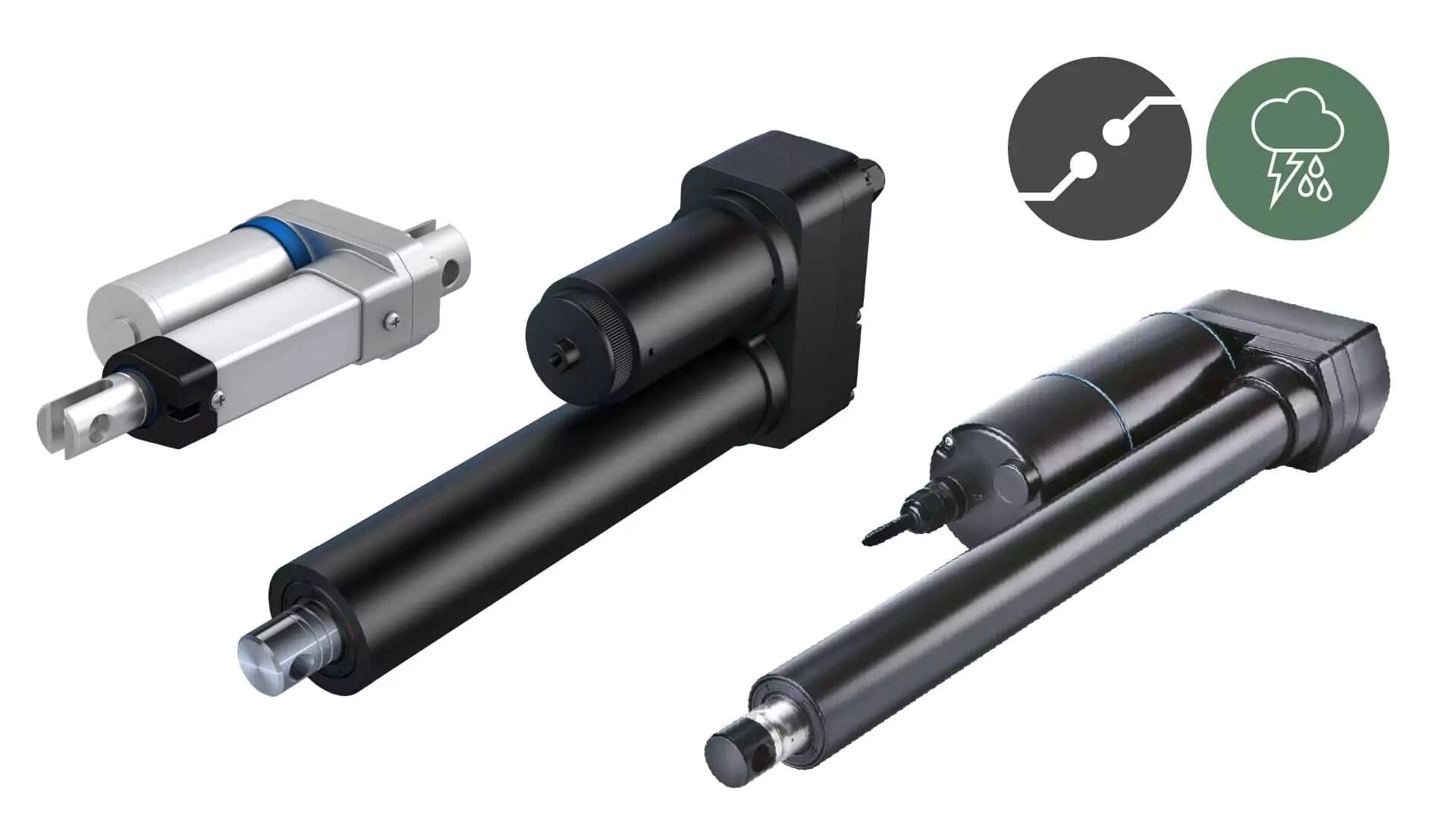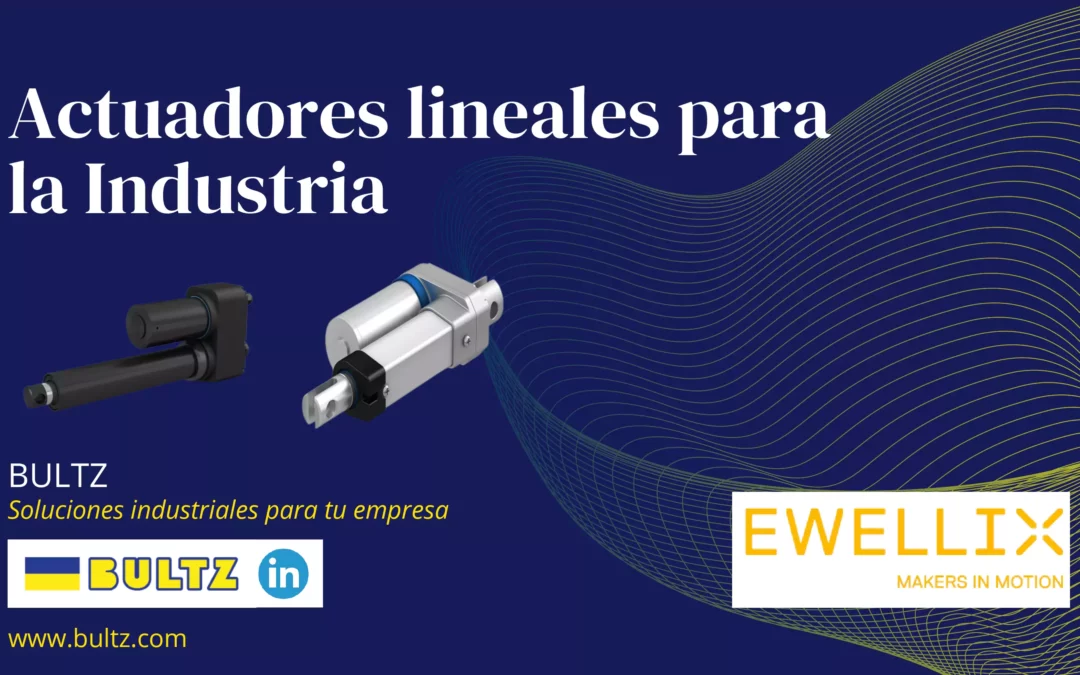What is an Electric Linear Actuator?
An industrial linear actuator is a device that converts electrical energy into linear motion. Its primary function is to generate linear displacement instead of rotation, distinguishing it from conventional rotary actuators like electric motors. These actuators are widely used in a variety of industrial, automotive, robotic, and automation applications.
Requirements for Using a Linear Actuator in Industry
For a linear actuator to be used in an industrial setting, it must meet several key requirements to ensure reliable and safe performance in demanding industrial environments. Here are some of the requirements that are typically important:
- Load Capacity: The linear actuator must have the ability to carry and move objects or loads according to the specific industrial application’s requirements. This involves both weight and force capacity.
- Speed and Precision: It should be capable of moving at the required speed for the application while maintaining accuracy in the desired position. Speed and precision are critical in many industrial applications, such as tool or part positioning.
- Environmental Resistance: Linear actuators used in industry often face adverse environmental conditions, such as dust, humidity, extreme heat, or cold. They should be designed to withstand and operate reliably in such environments.
- Durability and Lifespan: Linear actuators need to be durable and have a long service life, especially if they are used in industrial applications that require intensive use over extended periods.
- Overload Protection: They should feature overload protection to prevent damage in case of excessive loads or blockages during movement.
- Minimal Maintenance: Industrial linear actuators should require minimal maintenance. They should be designed to resist wear and minimize the need for frequent lubrication and adjustments.
- Electrical Compatibility: They should be compatible with the electrical power and control specifications used in the industrial plant. This includes operating voltage, control type (e.g., analog or digital), and communication interface if necessary.
- Safety: They must comply with applicable industrial safety standards and may require additional safety features such as emergency brakes or collision detection systems.
- Position Feedback: Many industrial applications require precise position feedback from the actuator. Therefore, the actuator should be equipped with sensors and feedback systems to provide accurate position information.
- Control and Programming: It should be compatible with industrial control systems and, in some cases, allow for programming and configuration to adapt to different tasks and motion sequences.
- Certifications and Regulatory Compliance: In certain industries, such as aerospace, automotive, or pharmaceuticals, it is crucial for actuators to comply with specific regulations and standards, such as ISO, CE, UL, among others.
In summary, linear actuators used in the industry must be robust, reliable, and tailored to the specific needs of the industrial application in which they are used. Meeting these requirements ensures safe and efficient performance in demanding industrial environments.

Industrial Linear Actuator: 7 Benefits of Implementing Them in Industrial Processes
The implementation of industrial linear actuators in industrial processes can provide several significant benefits that enhance efficiency, precision, and productivity in operations. Some of the key benefits include:
1. Precision and Repeatability: Linear actuators can perform linear movements with exceptional precision and repeatability, which is crucial in applications where the exact position of a component or tool is critical, such as in electronics manufacturing, precision assembly, or laser cutting.
2. Automation: Linear actuators can be easily integrated into industrial automation systems, enabling the continuous and consistent execution of repetitive tasks without the need for constant human intervention.
3. Time Savings: The speed and precision of linear actuators can accelerate industrial processes, reducing cycle times and increasing productivity. This is particularly important in high-speed production lines.
4. Flexibility: Linear actuators are versatile and can be used in a variety of applications and industrial sectors. They can be programmed to perform a wide range of movements and tasks, making them adaptable to different processes.
5. Space Savings: Compared to more complex mechanical systems, linear actuators typically occupy less space and require a more compact infrastructure. This is beneficial in environments where space is limited
6. Improved Safety: By automating certain hazardous or repetitive tasks, linear actuators can enhance workplace safety by reducing workers’ exposure to potential risks.
7. Low Maintenance: Electric linear actuators usually require less maintenance than traditional mechanical systems, as they have fewer moving parts and do not rely on fluids like hydraulic oil or compressed air.
Implementing industrial linear actuators in industrial processes can lead to increased efficiency, productivity, and worker safety while reducing operational costs associated with maintenance and manual labor. These benefits make them valuable components in a wide range of industrial applications.

Electric Linear Actuators: An Alternative to Hydraulic and Pneumatic Systems?
Yes, electric linear actuators are a viable alternative to hydraulic and pneumatic system groups in many industrial and commercial applications. Each of these systems has its own advantages and disadvantages, and the choice between them depends on the specific needs of the application.
However, it’s important to highlight that the selection between electric linear actuators, hydraulic systems, or pneumatic systems depends on factors such as load, speed, precision, working environment, and the total cost of ownership. Each technology has its pros and cons, so it’s crucial to carefully evaluate the specific needs of the application before making a decision.
Ewellix: Electric Linear Actuators Tailored for the Industry
Ewellix excels in manufacturing electric linear actuators specially designed to meet the demands of the industry, offering high-precision and high-performance motion solutions.
Electric linear actuators are used in a wide variety of industrial applications due to their ability to provide precise and controllable linear motion. Some of the most common industrial applications that often benefit from electric linear actuators include:
1. Assembly Line Automation: Electric linear actuators are essential in automating assembly processes, where they are used to precisely position components, assemble products, and perform handling tasks.
2. CNC Machinery: In computer numerical control (CNC) machines, electric linear actuators are employed to control the motion of cutting tools, ensuring precise cuts and machining in the production of parts and components.
3. Printing and Labeling: They are used in printers and labeling systems to control the motion of the print head or label applicator, ensuring high-quality and precise printing or labeling.
4. Food Processing and Packaging: Electric linear actuators are essential for adjusting and positioning components in food processing and packaging machines, ensuring accuracy in filling containers and sealing.
5. Pharmaceutical Industry: They are used in pharmaceutical packaging machines, analytical equipment, and handling systems to ensure precision and hygiene in pharmaceutical production.
6. Medical Equipment: In medical devices such as hospital beds, operating tables, and diagnostic equipment, electric linear actuators allow for precise and safe adjustment of patient position or equipment.
7. Warehouse and Logistics Automation: In material handling and transportation systems, electric linear actuators control the movement of conveyors, robotic arms, and other components for efficient warehouse and distribution center management.
8. Aerospace: They are used in flight simulation and testing applications, as well as for handling components in the production of aircraft and space equipment.
9. Automotive Industry: Electric linear actuators are employed in seat adjustment systems, mirrors, windows, and other vehicle components, improving comfort and ergonomics.
10. Renewable Energy: In solar and wind tracking systems, electric linear actuators control the orientation of solar panels and wind turbines to maximize energy capture.
These are just some of the many applications where electric linear actuators play a crucial role, enhancing precision, efficiency, and automation across a wide range of industries.
CONTACT US
RELATED POSTS

